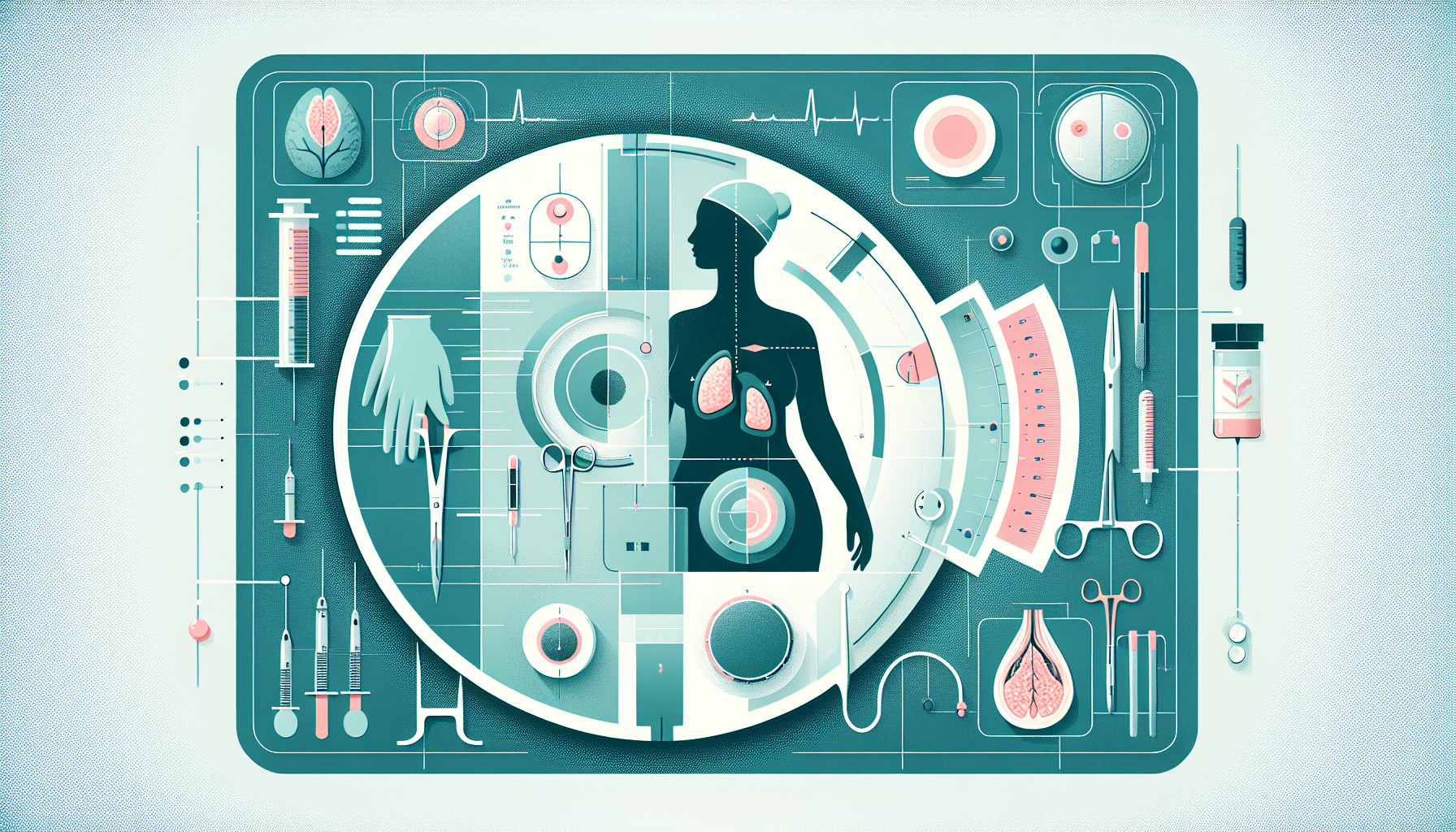Our Summary
This research paper is about a common problem that surgeons face after performing breast cancer surgeries (mastectomies) and/or removing lymph nodes from the armpit (axillary lymph node dissection or ALND) - the formation of seroma, a pocket of clear bodily fluid that can cause discomfort and complications. This study assesses the utility of a technique called quilting sutures (QS), which is used to bring tissue together and reduce dead space where seroma could form.
The researchers conducted a comprehensive review of existing studies comparing patients who had QS after their mastectomy or ALND versus those who had conventional wound closure (CC). Across 21 studies involving 3,473 patients, they found that those who had QS experienced significantly lower rates of seroma, less fluid drainage, quicker removal of drainage equipment, and shorter hospital stays. Importantly, the rate of wound complications such as surgical site infections, tissue death, blood accumulation, or skin dimpling were similar between those who had QS and those who had CC.
In simpler terms, this research suggests that using QS can help reduce complications and discomfort after breast cancer surgery and speed up recovery, without increasing the risk of other wound complications. Therefore, the researchers recommend considering QS for patients undergoing mastectomies, whether or not they also have ALND.
FAQs
- What is the main problem that surgeons face after performing mastectomies or removing lymph nodes from the armpit?
- What benefits were found in using quilting sutures (QS) in comparison to conventional wound closure (CC) after a mastectomy or ALND?
- Does the use of quilting sutures increase the risk of other wound complications after a mastectomy or ALND?
Doctor’s Tip
A helpful tip a doctor might tell a patient about mastectomy is to discuss the option of using quilting sutures (QS) during the surgery. QS can help reduce the risk of developing seroma, a common complication after mastectomy, and improve overall recovery outcomes. It is important to have an open conversation with your surgeon about the potential benefits of QS and how it can help optimize your healing process.
Suitable For
Patients who are typically recommended mastectomy include those with:
- Early-stage breast cancer that has not spread beyond the breast tissue
- Large or multiple areas of breast cancer within the breast
- Inflammatory breast cancer
- Genetic mutations (e.g. BRCA1 or BRCA2) that significantly increase the risk of breast cancer
- Recurrent breast cancer after previous lumpectomy and radiation therapy
- Patients who have had radiation therapy to the breast in the past and are now diagnosed with a new breast cancer
- Patients with a high risk of developing breast cancer in the future, such as those with a strong family history of the disease
Timeline
Before a mastectomy, a patient typically undergoes various tests and consultations to determine the best treatment plan. The surgery itself involves the removal of one or both breasts, depending on the extent of the cancer. After the surgery, the patient may experience pain, swelling, and discomfort, as well as emotional distress from the loss of their breasts.
In the weeks following the mastectomy, the patient will need to follow up with their healthcare team for wound care, drainage removal, and monitoring for complications such as seroma formation. Seroma is a common complication where fluid collects in the space where the breast tissue was removed, leading to swelling and discomfort.
With the use of quilting sutures (QS) after mastectomy, the patient may experience reduced rates of seroma formation, less fluid drainage, quicker removal of drainage equipment, and shorter hospital stays. This can lead to a faster and smoother recovery process for the patient, without increasing the risk of other wound complications.
Overall, the use of QS in mastectomy surgery can help improve patient outcomes and reduce discomfort and complications, ultimately benefiting the patient’s overall recovery and quality of life.
What to Ask Your Doctor
Some questions a patient should ask their doctor about mastectomy and the use of quilting sutures (QS) include:
- What is a seroma and how common is it after mastectomy or ALND?
- How does the use of quilting sutures (QS) help prevent seroma formation?
- What are the potential benefits of using QS compared to conventional wound closure (CC)?
- Are there any risks or drawbacks to using QS after mastectomy?
- How soon after surgery will the quilting sutures be removed?
- Will using QS affect the appearance or healing of my surgical incision?
- How long will it take to recover from surgery if QS is used?
- Are there any specific post-operative care instructions I should follow if QS is used?
- How will the use of QS impact my overall treatment plan for breast cancer?
- Are there any alternative techniques or procedures that could be considered instead of QS?
Reference
Authors: Morarasu S, Clancy C, Ghetu N, Musina AM, Velenciuc N, Iacob S, Frunza T, Roata CE, Lunca S, Dimofte GM. Journal: Ann Surg Oncol. 2022 Jun;29(6):3785-3797. doi: 10.1245/s10434-022-11350-5. Epub 2022 Feb 1. PMID: 35103890
